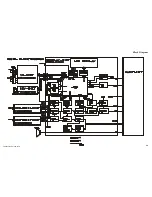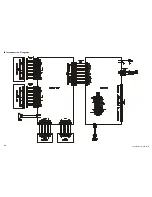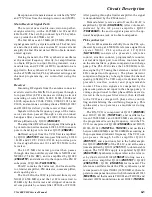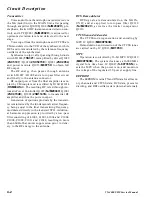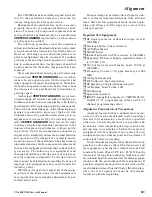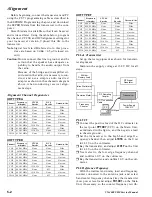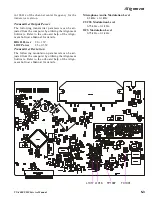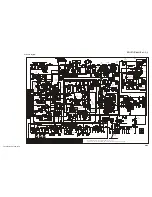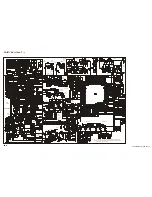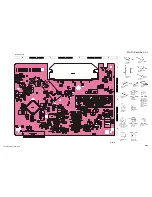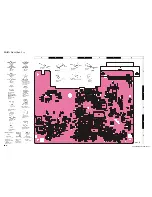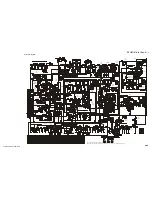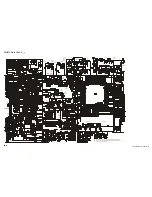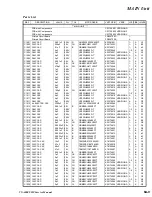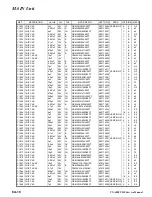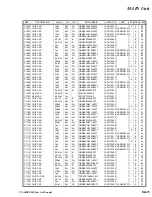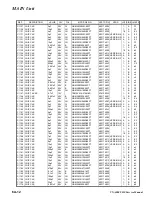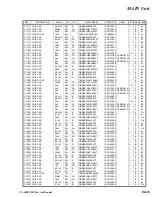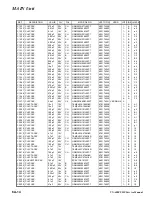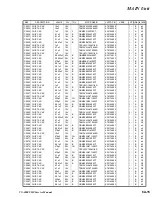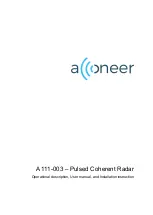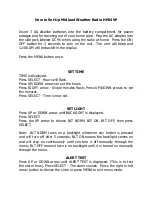
5-1
VX-4000 UHF Service Manual
Alignment
The VX-4000 has been carefully aligned at the fac-
tory for the specified performance across the fre-
quency range specified for each version.
Realignment should therefore not be necessary
except in the event of a component failure, or alter-
ation of version. All component replacement and
service should be performed only by an authorized
VERTEX STANDARD
representative, or the warran-
ty policy may be voided.
The following procedures cover the sometimes
critical and tedious adjustments that are not normal-
ly required once the transceiver has left the factory.
However, if damage occurs and some parts are re-
placed, realignment may be required. If a sudden
problem occurs during normal operation, it is likely
due to component failure; realignment should not
be done until after the faulty component has been
replaced.
We recommend that servicing be performed only
by authorized
VERTEX STANDARD
service techni-
cians who are experienced with the circuitry and
fully equipped for repair and alignment. Therefore,
if a fault is suspected, contact the dealer from whom
the transceiver was purchased for instructions re-
garding repair.
Authorized
VERTEX STANDARD
service tech-
nicians realign all circuits and make complete per-
formance checks to ensure compliance with factory
specifications after replacing any faulty components.
Those who do undertake any of the following align-
ments are cautioned to proceed at their own risk.
Problems caused by unauthorized attempts at re-
alignment are not covered by the warranty policy.
Also,
VERTEX STANDARD
must reserve the right
to change circuits and alignment procedures in the
interest of improved performance, without notify-
ing owners. Under no circumstances should any
alignment be attempted unless the normal function
and operation of the transceiver are clearly under-
stood, the cause of the malfunction has been clearly
pinpointed and any faulty components replaced, and
the need for realignment determined to be absolute-
ly necessary. The following test equipment (and
thorough familiarity with its correct use) is neces-
sary for complete realignment. Correction of prob-
lems caused by misalignment resulting from use of
improper test equipment is not covered under the
warranty policy.
While most steps do not require all of the equip-
ment listed, the interactions of some adjustments
may require that more complex adjustments be per-
formed afterwards.
Do not attempt to perform only a single step un-
less it is clearly isolated electrically from all other
steps. Have all test equipment ready before begin-
ning, and follow all of the steps in a section in the
order presented.
Required Test Equipment
r
RF signal generator: calibrated output level at
1000 MHz
r
Deviation Meter (linear detector)
r
AF Millivoltmeter
r
SINAD Meter
r
Inline Wattmeter with 5% accuracy at 1000 MHz
r
Regulated DC Power Supply: adjustable from 10
to 17 VDC, 15A
r
50-ohm Non-reactive Dummy Load: 100 W at
1000 MHz
r
Frequency Counter: >0.1 ppm accuracy at 1000
MHz
r
AF Signal Generator
r
DC Voltmeter: high impedance
r
RF Sampling Coupler(attenuation pad)
r
AF Dummy Load: 4 ohm, 20W
r
Oscilloscope
r
Spectrum Analyzer
r
IBM PC/compatible computer w/ VERTEX STAN-
DARD CT-71 programming cable and CE-35
channel programming editor.
Alignment Preparation & Precautions
A dummy load and inline wattmeter must be con-
nected to the main antenna jack in all procedures
that call for transmission, except where specified
otherwise. Correct alignment is not possible with
an antenna. After completing one step, read the fol-
lowing step to determine whether the same test
equipment will be required. If not, remove the test
equipment (except dummy load and wattmeter, if
connected) before proceeding.
Correct alignment requires that the ambient tem-
perature be the same as that of the transceiver and
test equipment, and that this temperature be held
constant between 20 and 30°C (68 ~ 86°F). When the
transceiver is brought into the shop from hot or cold
air it should be allowed some time for thermal equal-
ization with the environment before alignment. If
possible, alignments should be made with oscilla-
tor shields and circuit boards firmly affixed in place.
Also, the test equipment must be thoroughly
warmed up before beginning.











